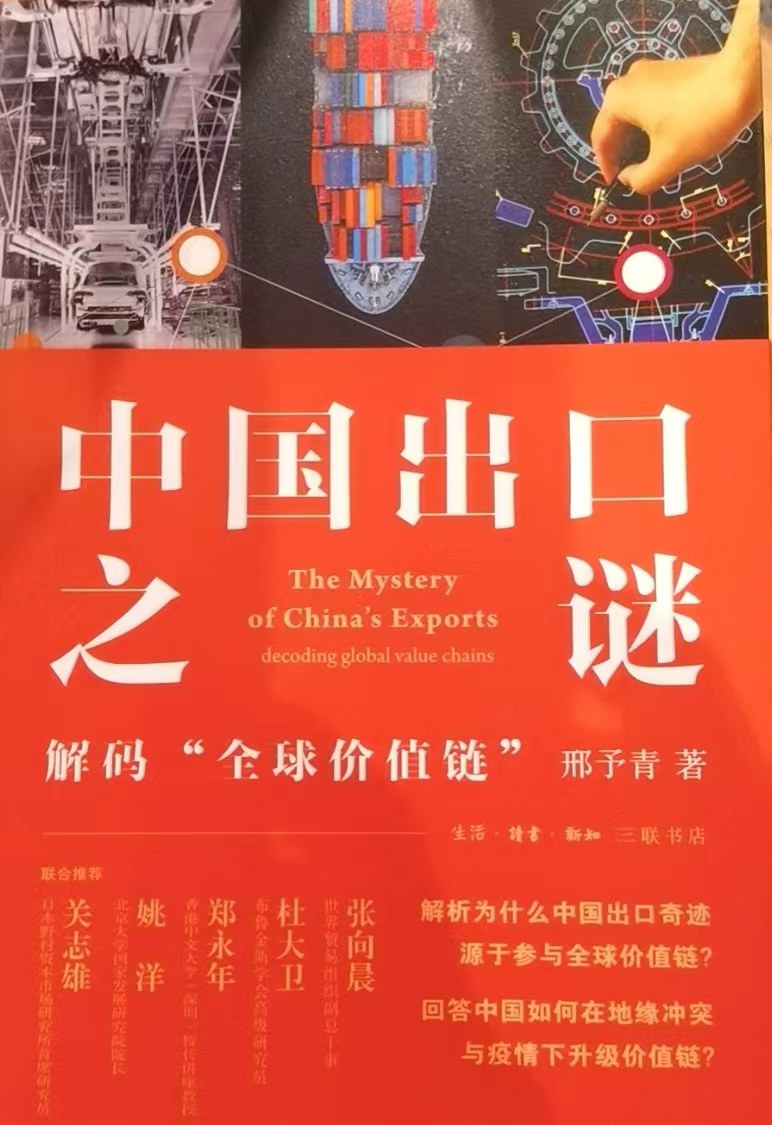WULOLIFE
《中国出口之谜:解码“全球价值链”》作者: 邢予青 出版社: 生活·读书·新知三联书店
《中国出口之谜:解码“全球价值链”》作者: 邢予青 出版社: 生活·读书·新知三联书店
Couldn't load pickup availability
Description
内容简介 · · · · · ·
8%,世所罕见。中国也从一个封闭落后的农业国家发展成为全球第二大经济体、第一大货物贸易国、第一大货物出口国、第二大货物进口国、第二大服务贸易大国、第二大对外直接投资的开放大国。通过改革开放,中国融入全球经济一体化,推动了中国经济的高速发展,走出一条可持续的强国之路。
这是第一本从全球价值链的角度,而不是从古典的比较优势理论、经济体制改革和贸易自由化的角度,系统地解读分析中国出口奇迹。
本书在全球价值链的研究框架下,分析了中国出口奇迹的形成,它专注于中国企业与外国跨国公司在全球价值链上的合作与分工的重要性。
从具体高科技产品生产和加工出口的价值链分析入手,揭示了中国出口与全球价值链之间的内在联系、中国企业在全球价值链上主要从事的任务,以及全球价值链是如何推动中国出口快速增长的机制。
中国企业深度参与发达国是中国制造/组装产品在全球市场上取得巨大成功的重要因素。它们在世界范围内广受欢迎的现象和竞争力,归功于中国企业深度参与全球价值链,归功于全球价值链的溢出效应。
量化了中国出口对不仅避免了国际投入产出表方法的技术复杂性,更为重要的是,它保留了全球价值链组织结构的基本特征。链的程度。
目前中美贸易战和新冠疫情正在发生,以中国为中心的全球价值链重组的可能轨迹在本书也有前瞻。
--
中国在改革开放后的短短三十年左右时间里,就从一个封闭的经济体成长为世界第一出口大国。本书以全球价值链为框架,从中国企业在全球价值链中扮演的角色出发,揭示了跨国公司的技术、品牌和市场营销网络对中国出口奇迹形成的决定性作用。以全球价值链为基础的国际贸易,与古典的布匹换葡萄酒的贸易存在着本质的区别,并导致了中美贸易平衡被扭曲。作者以iPhone易和美国苹果公司为案例, 析了贸易统计是如何扭曲中美双边贸易的。全球价值链不仅是一种新的贸易方式,也是发展中国家实现工业化的一条新路径。超级全球化时代催生了一个以中国为中心的全球价值链。但是,中美贸易摩擦、中美之间的技术博弈,以中心的全球价值链的稳定运作。 作者最后对未来全球价值链的发展和重构,进行了前瞻性分析,中国企业的未来成长之路。
作者简介 · · · · · ·
邢予青,西安人,日本国立政策研究大学院大学经济学教授。曾任亚洲开发银行研新加坡国立大学东亚研究所访问教授、芬兰中央银行访问研究员、世界发展经济学研究院访问研究员、联合国大学高等研究院访问研究员等。本科毕业于北京大学数学系,获美国伊利诺伊大学香槟分校经济学博士学位, 是《全球价值链发展报告2021:超越制造》的主编。论文《iPhone是如何扩大美国对中国的贸易赤字》,开创性地提出了用贸易增加值评估中美贸易平衡的理论, 他关于全球价值链研究的观点与成果受到《华尔街日报》 《时代周刊》 《金融时报》和 《中国日报》 《中国新闻周刊》 《财经》等报道,产生了较大影响。
